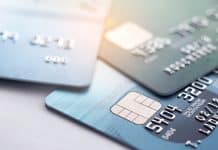
(FinancialHealth.net) – Being stuck in a cycle of debt is overwhelming. The bad news is it won’t go away on its own. The good news is, you can take progressive steps to tackle it and hopefully get it paid off sooner rather than later! So you probably want to know the quickest way to pay it off, right? One method is to start with the smallest debt you owe and watch the results snowball from there.
How The Snowball Method Works
The snowball method focuses on paying off the smallest debt you owe first. You make minimum payments on all your other debts, channeling any extra cash to your smallest obligation. Once it’s paid off, funnel all the money you were spending on that into the next smallest debt, and so on until the last bill is paid off. The reasoning behind it is to control the behavioral aspect of paying off debt. Once you see progress in terms of debts going away completely, you’re more likely to be encouraged and inspired to keep going. It’s the same satisfaction behind checking things off on a to-do list. This method is strictly for non-mortgage debt and it’s recommended that you aren’t behind on household bills and have at least $1,000 saved up for emergencies before you start.
How To Benefit From The Snowball Method
If you are close to being in default on a debt or considering bankruptcy, the snowball method of debt payment can help you avoid both. This is because it is predicated on the fact that you are making at least the minimum payment on all of your debts. If you are making these payments, creditors tend to leave you alone.
Cutting Back And Staying Focused
Have you been winging it when it comes to paying down your bills one month, but then have a spending spree the next? For this method to work, you have to have money left over in your budget to apply to that smallest debt. To get started, strip your everyday spending down to the bare minimum. Cut back on entertainment and other unnecessary expenses. Pick up extra shifts at work or get a side gig if necessary. The goal is to start setting money aside to pay on your debt.
Examples Of The Snowball Method At Work
Even for someone who is relatively new at paying on debts, the snowball method is a simple process. Look at this list of monthly debt obligations as an example:
- Medical bills – $400 balance ($45 monthly payment)
- Credit cards – $5,000 balance ($120 monthly payment)
- Auto note – $6,500 balance ($130 monthly payment)
- Student loans – $15,000 balance ($125 monthly payment)
Your initial goal is to start small and tackle that $400 dollar medical bill first. Just worry about making the minimum payment on the rest of your debts for now. Now let’s say you have an extra $300 in your budget once all the expenses are covered. If you put all of that into your medical bill, in two months, that debt is gone. Now, keep setting the same amount aside. Take the $300 and the $45 minimum payment you were spending on the medical bill and apply to the next lowest bill, your credit cards. If you pay $345 each month, added to the $120 minimum payment, you’ll quickly chisel away at that balance.
How would it feel to have NO credit card debt in less than a year? If you keep this up, and who wouldn’t when they see debts disappearing, you can be debt free faster than you think. Managing your debt load starts by paying all of your accounts down to a zero balance and not adding any new debts in the process. The snowball method is a tool many people use to do just that. Give it a try and see if you get positive results. The goal is to have a debt-free future moving forward!
~Here’s to Your Financial Health
Copyright 2020, FinancialHealth.net





















